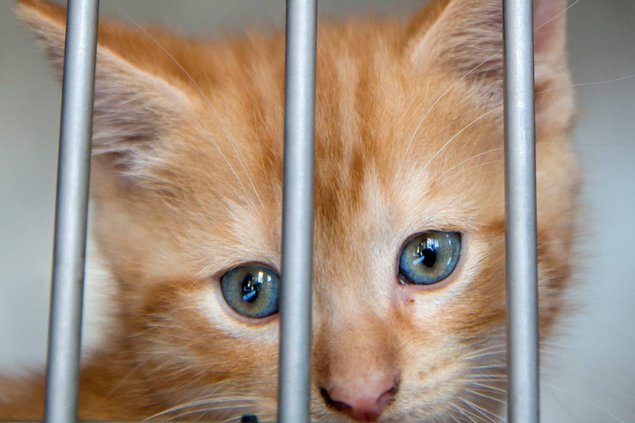Unwanted cats remain the biggest problem faced by the Stanislaus Animal Services Agency (SASA), its executive director told members of the Ceres City Council last week.
Annette Patton delivered her annual report, which also contained mostly good news about declining euthanasia rates. But she said the numbers are still unacceptably high.
The city Ceres is a member of the agency’s Joint Powers Authority (JPA), along with Stanislaus County and the cities of Hughson, Modesto, Waterford and Patterson. The cities of Turlock, Oakdale, Newman and Riverbank have their own animal control services.
“We definitely have a cat problem that we’ve been working on for five years,” said Patton.
To combat the problem of unwanted cats and the euthanasia of thousands more, the agency continues to provide the Trap, Neuter and Return (TNR) program for feral cats so they cannot reproduce. Stray cats which are spayed or neutered are also vaccinated before being returned to their original habitats with their ears “tipped” to indicate they have been sterilized.
The TNR program, which began in Stanislaus County six years ago and is reducing numbers, is less expensive than euthanizing cats, said Patton.
“We want less cats coming into the shelter.”
She said of the 6,876 cats making their way to the shelter for the 2018-19 budget year, 2,053 were euthanized. That number includes cats which were unhealthy, old or hit by cars.
The euthanasia rate for dogs dropped to 10 percent, said Patton, which has been the lowest percentage in recent years. The rate was as high as 53 percent in fiscal year 2011-12. The 10 percent figure includes all dog euthanasia, including dogs that suffer accident injuries, terminal disease and old age.
“For every dog that enters our shelter, ninety percent leave alive,” she noted. While 10 percent are still euthanized, the numbers enable the shelter to be considered a “no kill facility.”
In the last fiscal year, Patton’s agency sent 5,971 animals to non-profit animal rescue or adoption shelters, some up to Montana and Washington. The Humane Society of Stanislaus County also finds homes for the pets.
The shelter continues to offer onsite vaccination clinics every Saturday.
Last year the agency operated on a budget of $4.6 million, with revenues at $1.4 million and $3.2 million in funding from member cities and the county. Each jurisdiction pays into the JPA based on the percentage of animals it sends to the Thomas W. Mayfield Regional Services Center shelter on Crowslanding Road. Any city’s contribution is offset by the revenues from dog licenses sold in its jurisdiction. Patton said the cost system is an incentive for cities to curb unwanted cats and dogs.
Patton reported that the shelter continues to benefit from increased volunteer hours. She reported that 29,000 hours in free labor logged through the participants of the Sheriff’s REACT Center, and hospital student program. Volunteers help man the animal adoption center and chemically clean the kennels each day, and feed and water the animals. Other volunteers include veterinarians, who engage in dog training and adoptions.
SASA is reinstating its dog license canvassing effort after a two-year hiatus due to a shortage of employees. Workers will be going out door-to-door to see if dogs have been licensed and vaccinated against rabies. The effort started in Modesto last month and moves next to Waterford and Ceres.





